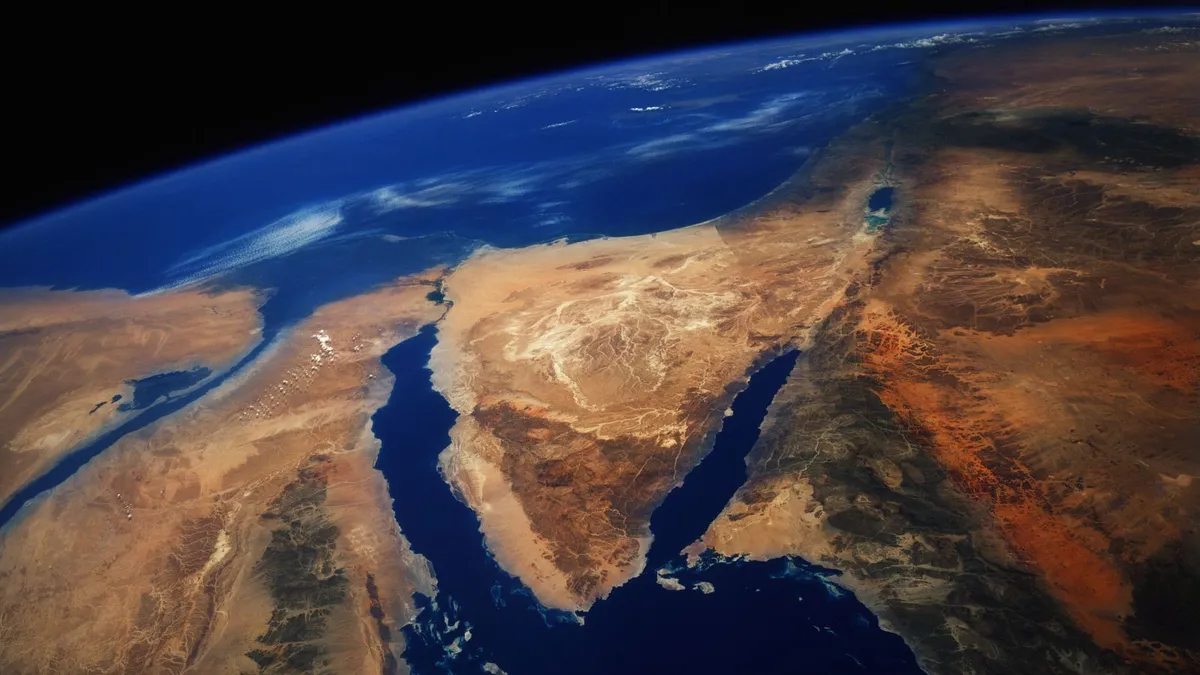
The Book of Exodus narrates the miraculous parting of the Red Sea, a pivotal moment that allowed Moses and the Israelites to escape from Egypt. However, a recent scientific study reveals an even more dramatic tale from history: approximately 6.2 million years ago, the Red Sea completely dried up. This ancient environmental event, detailed by researchers, sheds light on a cataclysmic flood that later refilled the seabed, potentially carving a nearly 200-mile-long (320 kilometers) submarine canyon into the floor of the Red Sea.
According to Tihana Pensa, the lead author of the study and a researcher at King Abdullah University of Science and Technology in Saudi Arabia, the findings indicate that the Red Sea basin recorded one of the most extreme environmental events on Earth. Pensa stated, "When it dried out completely and was then suddenly reflooded about 6.2 million years ago, the flood transformed the basin, restored marine conditions, and established the lasting connection between the Red Sea and the Indian Ocean." This research offers valuable insights into the geological and environmental history of the region.
The formation of the Red Sea dates back 30 million years ago, when the African and Arabian tectonic plates began to pull apart, creating a deep rift valley. Initially, this valley was dotted with lakes until it was flooded by the Mediterranean Sea around 23 million years ago. However, just before 6 million years ago, the Red Sea experienced a 640,000-year salinity crisis. During this period, sea levels plummeted, leading to an alarming increase in salt concentration. Consequently, salt deposits accumulated to depths of up to 1.2 miles (2 km) in certain areas, resulting in the extinction of various marine life forms.
A new study focusing on the seafloor has revealed that the Red Sea entirely desiccated during this salinity crisis, transforming into a dry, salty desert. This barren phase concluded with a dramatic flood from the Indian Ocean, which breached a volcanic ridge separating the Red Sea from the Gulf of Aden. The study, published on August 9 in the journal Communications Earth & Environment, details how researchers combined data on the rock layers beneath the Red Sea with seismic data to reveal the sedimentary history of the sea.
The researchers discovered an unconformity throughout the seabed, characterized by older, tilted sedimentary layers abruptly covered by a horizontal layer of rock. This consistency indicates that the entire sea desiccated during this period. To date these events accurately, the team tracked changes in radioactive strontium, which varies at a known rate within the oceans. They also examined microfossils, which were largely absent between 14 million and 6.2 million years ago, coinciding with the Red Sea's extreme salinity or complete dryness.
After 6.2 million years ago, fossils of marine creatures, including sea snails and bivalves, reemerged, suggesting that water—and life—returned due to the breach of the Hanish Sill, a ridge of volcanoes and seamounts in the Gulf of Aden. This flooding event is believed to have occurred rapidly, in less than 100,000 years, and was powerful enough to carve out the 200-mile-long, 5-mile-wide (8 km) submarine canyon that exists from the Gulf of Aden to the Red Sea today.
The combination of ancient biblical narratives and modern scientific research illustrates the dynamic history of the Red Sea. From miraculous events to extreme geological transformations, this region continues to be a focal point for understanding Earth's environmental history and tectonic activity.